 Browns Archive
Browns Archive  Cleveland Sports Vault: What Browns Fans Need to Know About Fred “Curly” Morrison
Cleveland Sports Vault: What Browns Fans Need to Know About Fred “Curly” Morrison
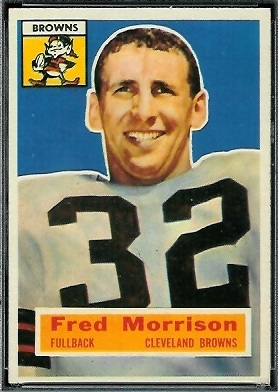 I am not exactly a Woody Allen kind of guy. He is brilliant, and clever. He is also whiny, and self-absorbed. And you know how Opening Day at Progressive Field is fun, despite having to tolerate the onslaught of the superficial, see-and-be-seen crowd? Attending Woody Allen’s films is very similar to that.
I am not exactly a Woody Allen kind of guy. He is brilliant, and clever. He is also whiny, and self-absorbed. And you know how Opening Day at Progressive Field is fun, despite having to tolerate the onslaught of the superficial, see-and-be-seen crowd? Attending Woody Allen’s films is very similar to that.
But there is one Woody Allen quote that I love. I try to live by it:
“Eighty per cent of success is just showing up.”
During our older daughter’s college experience, I have worked that theme repeatedly. There are people to meet. Things to try. What a chance to get out there and begin to experience life. And who knows what doors may open to other, unforeseen possibilities?
Just showing up allows serendipity to occur. Meaning, the fortunate occurrences that seem to happen by accident. Many of us met our spouses after showing up, somewhere. It certainly happened that way with me, thankfully (no, it was not at a Woody Allen premiere).
In the winter of 1961, a series of events was in motion that would forever impact the relationship between the city of Cleveland and her beloved Browns. For some, it was a case of serendipity.
It is a story that had begun over ten years earlier.
***
The 1950 Rose Bowl in Pasadena, California pitted the Ohio State Buckeyes against the Bears of the University of California. Held on January 2nd (due to the 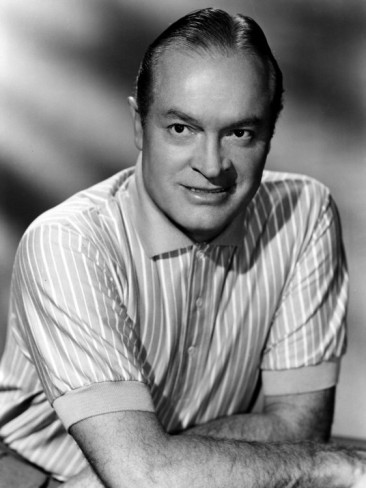
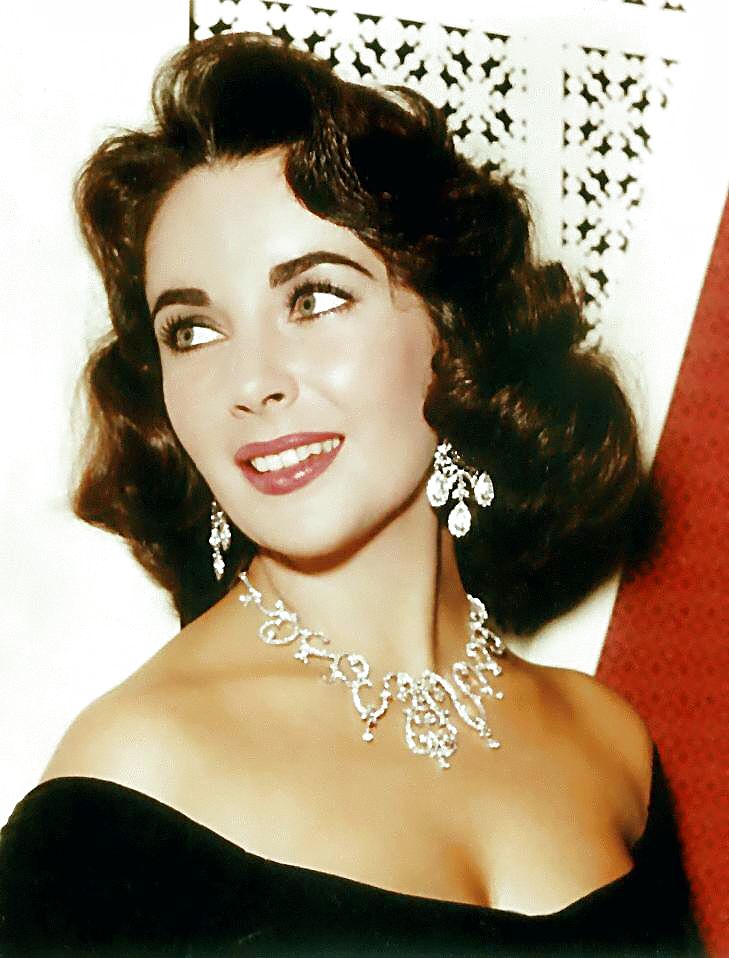 1st falling on a Sunday), the game was billed as a rematch of the 1921 contest between the two schools. Interestingly, that was the only bowl game the Buckeyes had ever participated in, and it was a loss.
1st falling on a Sunday), the game was billed as a rematch of the 1921 contest between the two schools. Interestingly, that was the only bowl game the Buckeyes had ever participated in, and it was a loss.
To this day, participants still revel in memories that surrounded the event. Radio interviews during the week before the game. The team lunch with the stunning, seventeen-year-old Elizabeth Taylor as the special guest. A visit from Clevelander Bob Hope.
The Buckeyes were a two-touchdown underdog. The boys from Ohio made it their obsession to win the game for their home state.
The Rose Bowl game itself was highly entertaining for the nearly 101,000 in attendance. It was tied 14-14 late into the fourth quarter, when the Cal punter severely shanked one deep in their own end of the field. Ohio State took possession at the thirteen yard line. They failed to punch it in- on fourth down, the field goal kicker trotted onto the field. In a fascinating act of defiance, the offense sent him back to the sidelines (one could not have conceived of this happening while Paul Brown had been the Buckeye coach). In the confusion, the offense took too much time to snap the ball, and the line of scrimmage was moved back five yards. (At least one account of the game holds that Ohio State purposely took the delay of game penalty in order to give the kicker a better angle.)
The Buckeyes would win by a 17-14 score. Black and white footage was shown by newsreel (although many homes did not have televisions). Interestingly, the national press coverage of the game focused heavily on the stark difference between the marching bands representing the two schools. Ohio State’s band was impeccable, from their musicianship, to their uniforms, to their movements. Cal’s band was apparently the polar opposite. Even their school president 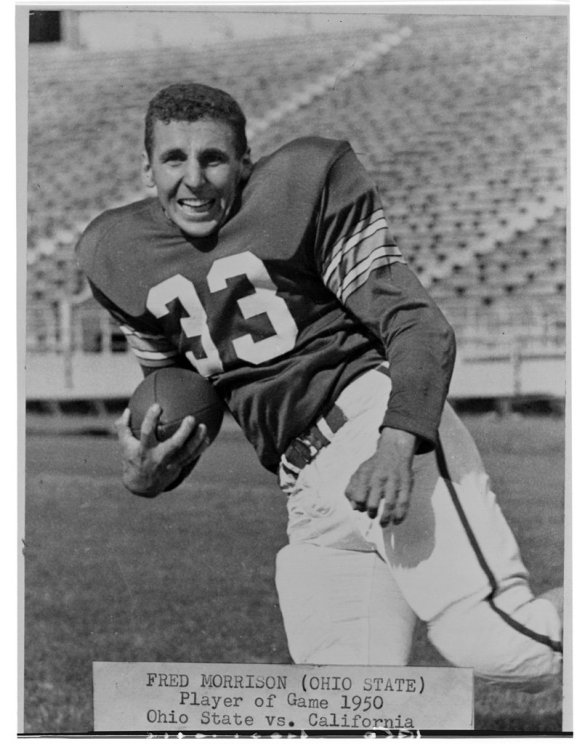 said they “smelled”, and writers ran with it. His comments went ‘viral’, in a 1950 kind of way.
said they “smelled”, and writers ran with it. His comments went ‘viral’, in a 1950 kind of way.
The Most Valuable Player of the 1950 Rose Bowl was fullback Fred “Curly” Morrison. He ran the ball 24 times, for 127 yards. He scored a touchdown, and had two others called back due to penalties.
Following that 1949 season, the Chicago Bears selected Morrison with the tenth pick in the NFL draft. He played in Chicago for four seasons.
In 1954, Paul Brown swung a trade that brought him to Cleveland. He’d become known as the ‘other’ really good back the Browns had had in the 1950s who wore the number 32. He played for the Browns for three years, helping them win the NFL Championship Game in 1954 and 1955.
1955 was Curly Morrison’s best NFL season. He led the Browns in rushing with 824 yards (in a 12 game season) and a 5.3 yard average per carry. He surpassed Marion Motley’s team record for rushing yardage.
But the team needed to overcome some adversity in 1955 on its way to championship glory. Staring everyone right in the face was Otto Graham’s retirement. The all-time great quarterback was persuaded by Coach Brown to agree to come back to the team if a suitable replacement could not be found. One was in fact not found (Graham’s son told The Cleveland Fan’s Al Ciammaichella that Brown didn’t really look terribly hard). And the team had lost five of its six exhibition games.
Once Graham returned, it took a short while for him to regain focus and get into game shape. The Browns dropped the opener to the Washington Redskins, before ripping off six straight victories. And they ended the season with three wins, including the championship game against Graham’s nemesis, the Los Angeles Rams.
The division clincher had come in the second-to-last regular season game, which also sealed a two game sweep of the Pittsburgh Steelers.
While retaining the services of Otto Graham was key, so was the rest of the offensive backfield. Ed Modzelewski had been picked up in a trade with the Steelers 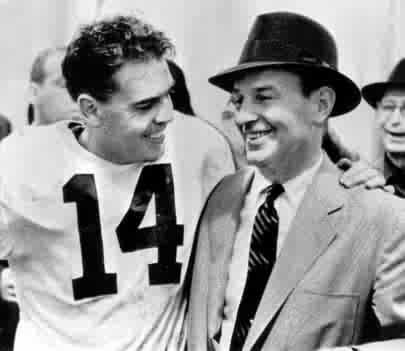
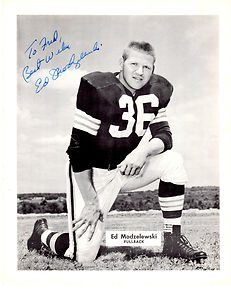 for Marion Motley. He instantly became the starting fullback. That allowed Curly Morrison to move to halfback. The one-two punch of “Big Mo” and “Curly” (what, couldn’t they call Graham “Larry”?) was renowned as among the best in the NFL.
for Marion Motley. He instantly became the starting fullback. That allowed Curly Morrison to move to halfback. The one-two punch of “Big Mo” and “Curly” (what, couldn’t they call Graham “Larry”?) was renowned as among the best in the NFL.
Upon his retirement, Curly Morrison became the first ex-jock to be signed by CBS Sports to announce NFL games. Beginning in 1958, he provided color commentary for Browns games as part of the “CBS Sunday Sports Spectacular.”
He moved on to network sales for CBS, and became owner of a company that facilitated the use of videotape in television. Later in his life, he spearheaded such initiatives as the NFL Legends Invitational Golf Tournament at Pebble Beach, and he was the CEO and general manager of USFL and World Football League teams.
But out of the long list of activities pursued by Curly Morrison over his lifetime, there is one that may be of particular interest to Cleveland Browns fans.
In writer Dan Coughlin’s book Pass the Nuts, he relates the story of Morrison’s pivotal role in Browns history. In 1961, Morrison was an ad salesman for CBS. He called on the Akron rubber companies for the network. His routine included regular stops at the Theatrical Grill in downtown Cleveland. Mushy Wexler’s restaurant was noted for notable patrons, Clevelanders and visitors alike. It was located on Short Vincent, which linked East 6th and East 9th Street.
Morrison was in the Theatrical one day, and heard that the Cleveland Browns were for sale. He looked into it further, and learned that the syndicate of owners was happy with the money the team had been making, but they wanted to free up their cash.
Morrison contacted the point man for the owners, and learned that they had an offer on the table already, for two million dollars. He told them he could get them three million…
He knew a secret that NFL owners did not even know. He knew that CBS and the NFL were about to sign a new television contract that would result in a windfall of one million dollars for each team.
He was told that he had thirty days to find a buyer. At stake was a 10% finder’s fee for Morrison.
With only one week until his deadline, a 35 year old television production company owner and ad executive named Art Modell emerged. The New York Giants fanatic also liked the Browns, and became obsessed with purchasing his own NFL franchise. Modell sold most of what he owned, and lined up minority investors. He borrowed the full amount that was approved by the banks.
The Cleveland Browns were sold to Modell for nearly $4million. He remained leveraged to the hilt for the entire half-century he remained alive.
Curly Morrison cashed in to the tune of $400,000. He started his own television production company.
Here was a man who lived his life by the ethic of “showing up”.
How serendipitous.
A 1950 Rose Bowl photo:
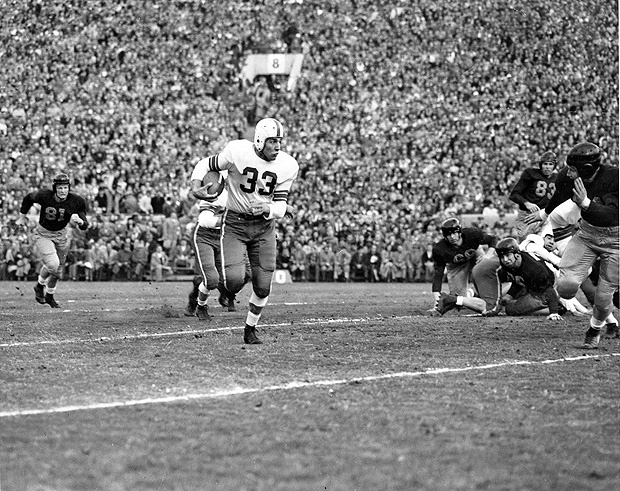
- NBA Announces 2013-2014 Schedule
- Browns Ink Sharknado
- Sharknado A No-Show For Rookie Camp
- Trent Richardson Out Until Training Camp
- Browns Sign Brandon Jackson
- Carrasco Suspended Eight Games
- Browns Add to Wide Receiver Depth with David Nelson
- Browns Need to Learn from Past Draft Mistakes
- Browns Release Chris Gocong and Usama Young
- Browns Missing on Grimes Disappointing, But Not The End
The TCF Forums
- Official- Browns Coach Search/Rumors
mattvan1 (Tuesday, January 21 2014 1:19 PM) - Movies coming out
rebelwithoutaclue (Tuesday, January 21 2014 12:56 PM) - 2015 Recruiting
jclvd_23 (Tuesday, January 21 2014 12:38 PM) - The 2014 Offseason Thread
Larvell Blanks (Tuesday, January 21 2014 12:25 PM) - Chris Grant's first 3 drafts
Kingpin74 (Tuesday, January 21 2014 10:13 AM) - Mike Brown
YahooFanChicago (Monday, January 20 2014 11:15 PM) - 2014 Hoops Hockey Hijinx
jpd1224 (Monday, January 20 2014 4:44 PM) - 2014 Recruiting
jclvd_23 (Monday, January 20 2014 2:26 PM) - Wish List - #4 Pick
Hikohadon (Monday, January 20 2014 1:26 PM) - #1 overall pick Anthony Bennett
TouchEmAllTime (Sunday, January 19 2014 1:28 PM)



